Lizard Lighthouse
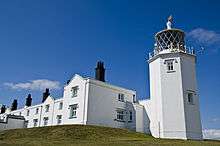 Lizard Lighthouse | |
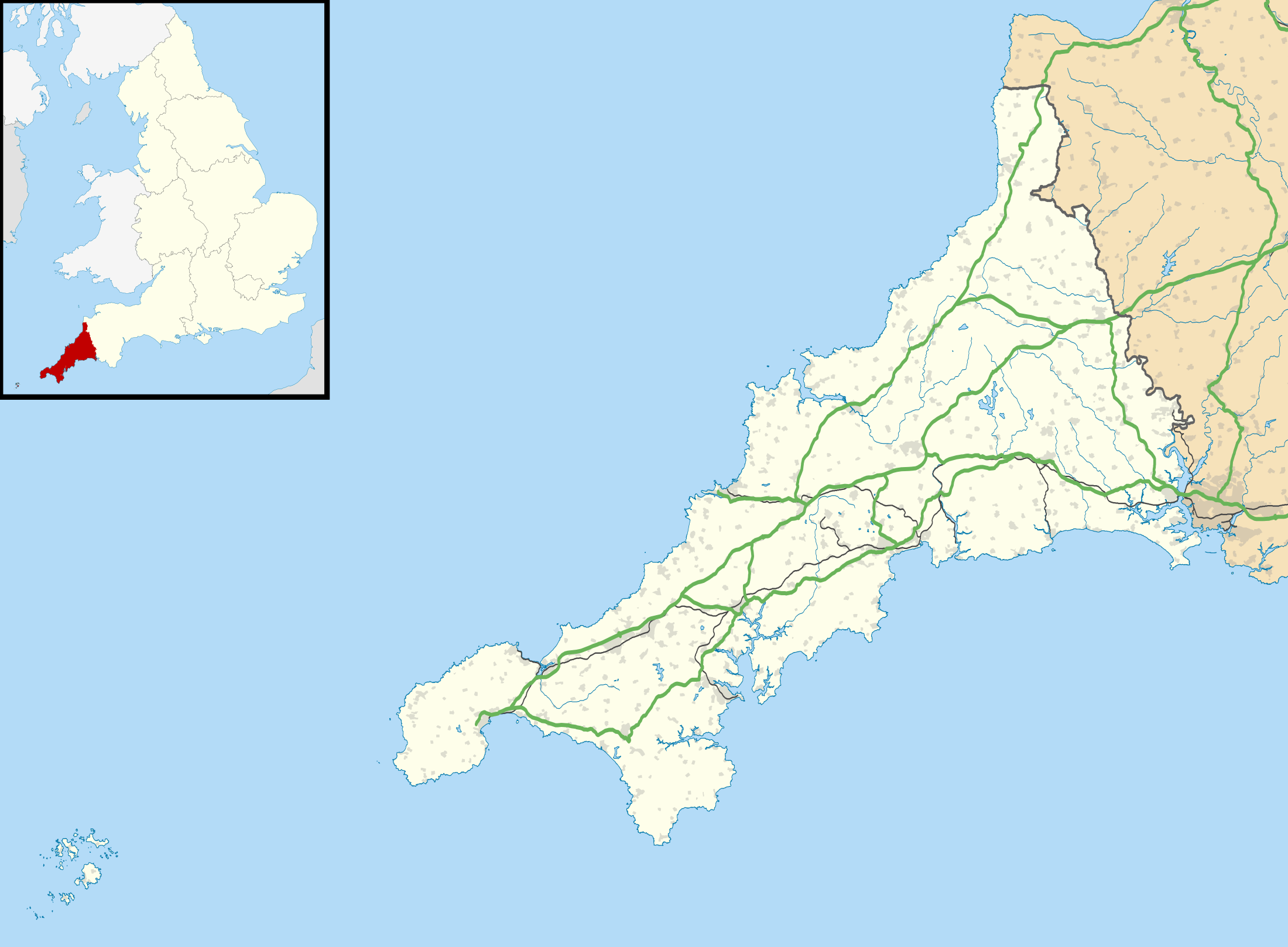 Cornwall | |
| Location |
Lizard Point Cornwall England |
|---|---|
| Coordinates | 49°57′37″N 5°12′8″W / 49.96028°N 5.20222°WCoordinates: 49°57′37″N 5°12′8″W / 49.96028°N 5.20222°W |
| Year first constructed | 1619 (first) |
| Year first lit | 1751 (current) |
| Automated | 1998 |
| Deactivated | 1903 (West tower) |
| Construction | stone tower |
| Tower shape | twin octagonal towers with balcony and lantern connected by keeper's quarter |
| Markings / pattern | white tower and lantern |
| Height | 19 m (62 ft) |
| Focal height | 70 m (230 ft) |
| Current lens | 2nd order Catadioptric four-panel rotating lens |
| Intensity | 800,000 candela |
| Range | 26 nmi (48 km) |
| Characteristic | Fl W 3s. |
| Admiralty number | A0060 |
| NGA number | 0064 |
| ARLHS number | ENG 068 |
| Managing agent | Trinity House[1] |
| Heritage |
Grade II listed building |
The Lizard Lighthouse is a lighthouse at Lizard Point in Cornwall, England, built to guide vessels passing through the English Channel. It was often the welcoming beacon to persons returning to England, where on a clear night, the reflected light could be seen 100 mi (160 km) away.[2][3]
History
A light was first exhibited here in 1619,[4] built thanks to the efforts of Sir Christopher Dimaline but it was extinguished and the tower demolished in 1630 because of difficulties in raising funds for its operation and maintenance.
The current lighthouse, consisting of two towers with cottages between them, was built in 1751. Trinity House took responsibility for it in 1771, and it was automated and demanned in 1998.[5] Originally both towers were lit, but since 1903 only the Eastern Tower has remained in use; the lantern has been removed from the Western Tower.
In March 1954 the lighthouse keeper and assistants were able to put out a fire that was started in the exhaust pits of the engines providing the electric power.[6]
Opened in 2009 with a grant from the Heritage Lottery Fund,[7] the Lizard Lighthouse Heritage Centre is located in the lighthouse engine room, which still features some of the original engines. Interactive exhibits and displays focus on the history of the lighthouse, the life of a lighthouse keeper, and the role of lighthouses in sea safety. Currently, the buildings around the site are being used as holiday cottages. [8]
Generator
The lighthouse's former generator is now in the collection of Thinktank, Birmingham Science Museum.[9] It carries a plate marked:[9]
L'Electricite magneto - Electrique No.21b. A de meritens, 44 Rue Bournalt Paris. Dte S.G.D.G. on France at L'Etranger
Gallery
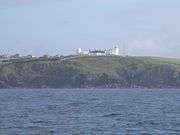
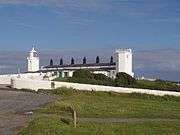

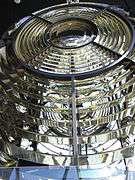
.jpg)
See also
References
- ↑ Lizard Lighthouse The Lighthouse Directory. University of North Carolina at Chapel Hill. Retrieved 22 April 2016
- ↑ "The New Lizard Light". The Picton Post (348). New South Wales, Australia. 18 January 1911. p. 7. Retrieved 6 July 2018 – via National Library of Australia.
- ↑ "LIGHTS THAT SAVE LIVES". Blyth Agriculturist. XV, (859). South Australia. 31 July 1925. p. 5. Retrieved 6 July 2018 – via National Library of Australia.
- ↑ Pearce, Cathryn (2010). Cornish Wrecking, 1700-1860: Reality and Popular Myth. Boydell & Brewer. p. 25. ISBN 978-1-84383-555-4.
- ↑ "Lizard Lighthouse". Trinity House. Archived from the original on 3 September 2011. Retrieved 31 December 2014.
- ↑ "Keepers Save Fire-Menaced Lizard Light". The West Australian. 70, (21, 112). Western Australia. 22 March 1954. p. 8. Retrieved 6 July 2018 – via National Library of Australia.
- ↑ "Lighthouses". Trinityhouse.co.uk. Archived from the original on 28 May 2010. Retrieved 31 December 2014.
- ↑ "Bishop Rock".
- 1 2 Birmingham Museums Trust accession record 1954S00295
External links
| Wikimedia Commons has media related to Lizard Lighthouse. |